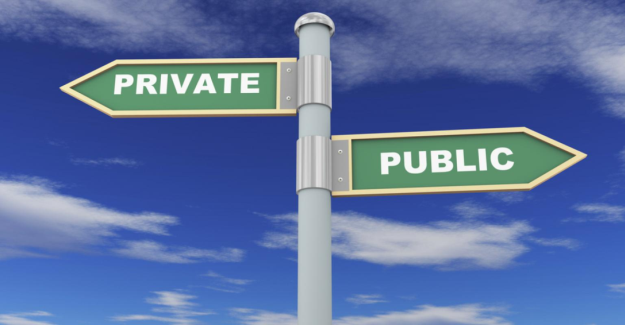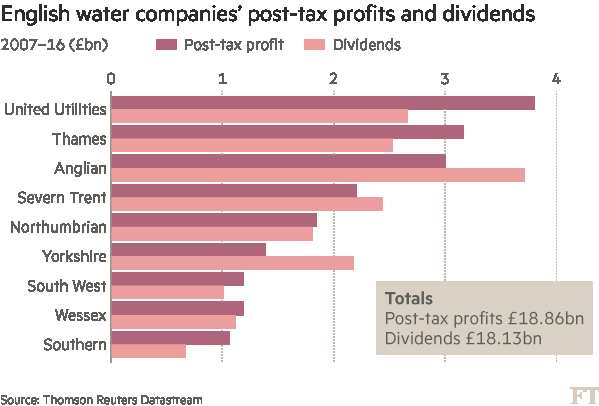Privatised Water Costs Consumers £2.3bn More a Year
Published on by Water Network Research, Official research team of The Water Network in Business
Consumers in England are paying £2.3bn more a year for their water and sewerage bills under the current privatised system than if the utility companies had remained in state ownership.

This is according to research by the University of Greenwich.
The nine English regional water and sewerage companies — three of which are listed on the stock market and six of which are owned privately — have invested no significant new shareholder equity but extracted nearly all of their post-tax profit as dividends, according to the Greenwich university report, which calculated the cost of privatisation to each household as over £100 a year.
At the same time, the companies have built up a growing pile of debt to finance investments over the 28 years since the industry was privatised.
“This is an expensive way to finance infrastructure,” said Dr Kate Bayliss, a research associate at the School of Oriental and African Studies at the University of London, who co-authored the study. “It means that little extra money, in real terms, has come from shareholders while investment has largely been financed by commercial borrowing.”
England is the only country to have fully privatised its water and sewerage system, with ownership transferred from the state to large regional monopolies in 1989.
Investors paid £7.6bn for the water and sewerage companies in 1989 but the UK government took on the sector’s entire £4.9bn in debts and gave the new private corporations £1.5bn of public funds.
Three companies — Anglian Water Group, Severn Trent Water and Yorkshire Water Services — have paid out more in dividends than their total pre-tax profits over the past decade

Read more: Financial Times
Media
Taxonomy
- Water Access
- Business Strategy
- Governance & Policy
- Water Utility
- Infrastructure
- Utility Management
- Infrastructure Management
- Market Access
- Privatization